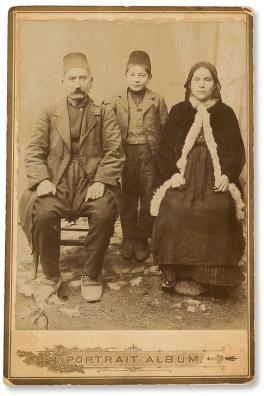Portraits of Unbelonging: Photography, Nationality, Mobility

In 1896 the Ottoman sultan issued a decree that allowed Armenians—and only Armenians—to migrate on the condition that they expatriate and never return to their homeland. A key step in this process was sitting for a photograph. The Ottoman state archived the photographs; the Armenian migrants received passports and left for European ports, most of them bound for the United States. Between 1896 and 1908, more than four thousand Armenians sat for such portraits of unbelonging. Almost two decades before photographs were attached to passports anywhere in the world, Ottoman Armenian expatriation portraiture is one of the earliest examples of the use of surveillance photography for border control.
Zeynep Devrim Gürsel is Associate Professor of Anthropology at Rutgers University. She is the author of Image Brokers: Visualizing World News in the Age of Digital Circulation (2016) and the director of Coffee Futures (2009) available in French as Marc d'Avenir is one of the earliest examples of the use of surveillance photography for border control.
